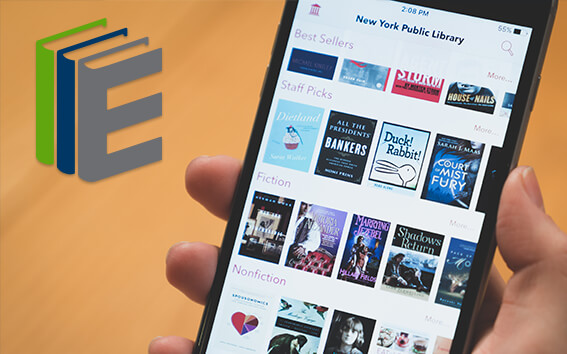Children and Parents
Kids Activities & Resources Inspired by Black Engineers
This blog post is part of the Woodson Project—a series of events, posts, and book lists on subjects including empowering Black families, amplifying Black voices, exploring Black identity and intersectionality, and discovering Black influencers in STEAM. The project was created by branch staff from across NYPL to honor Dr. Carter G. Woodson, who in 1926 created Negro History Week—the precursor to Black History Month.
Technology and engineering are everywhere, from the streets we walk on to the water systems that allow us to have running water in our homes. Take a walk around your city and you will be able to notice everything in our environment that required the expertise of an engineer! The contributions Black engineers have made to the United States and the world (and the universe!) are many indeed. Below you will find some activity sheets and other resources that celebrate these contributions, specifically the contributions of our highlighted engineers: Kimberly Bryant and Lonnie Johnson.
What do different types of engineers work on? This activity sheet for children 9-12 will ask them to try to define the field of engineering based on context clues and to match the term to the tangible things they work on.
Engineer Highlights: Kimberly Bryant and Lonnie Johnson
Kimberly Bryant (1967) was born in Memphis, Tennessee and is an electrical engineer. She has worked in biotechnology and founded Black Girls Code, a nonprofit that aims to introduce coding to Black girls and teens, and to promote ongoing training in this field.
Find an activity sheet about binary code here.
Lonnie Johnson (1949) was born in Mobile, Alabama. As a young boy, he would tinker and make all kinds of things, encouraged by his parents. He built his own robot in high school and went on to become a mechanical and nuclear engineer. While working at the Jet Propulsion Lab, he invented the Super Soaker toy!
What are the differences between different types of water propulsion tools we have handy? The following investigation was inspired by Lonnie Johnson's Super Soaker invention. Follow along with a written activity sheet here.
Related Event
Register here for our program to design your own robot on February 17 at 1 PM
How Can Kids Use Engineering as Self-Care?
Self-care is something that you do for yourself that relaxes you, which makes sure that you can handle the stresses of everyday life a little bit better. A way to use engineering as self-care could be to pull out your LEGO bricks and build something. The act of putting your mind to a goal and working on it bit by bit can be relaxing. You can build things you see in the city (use the book below as a reference guide) or you can simply use each brick to symbolize something you are grateful for or something you wish to let go of.
Also, software engineers (melding the fields of technology and engineering) develop meditation apps, which may work for you. Liberate, for example, was designed by software engineer Julio Rivera specifically for the Black community.
Additional Resources
Biography in Context database
Provides biographical information on 650,000+ people from throughout history, around the world, and across all disciplines. Available to use from home with your library card.

Whoosh!: Lonnie Johnson's Super-Soaking Stream of Inventions by Chris Barton, illustrated by Don Tate
An introduction to the life and creative achievements of NASA engineer and inventor Lonnie Johnson, this book describes his childhood in a house full of siblings, the problem-solving talents that inspired his career, and his accidental invention of the Super Soaker.

Junk Drawer Engineering: 25 Construction Challenges That Don't Cost a Thing by Bobby Mercer
The author of The Flying Machine Book presents a latest collection of projects that center on basic engineering principles and applied physics, demonstrating how to develop greater problem-solving skills using everyday materials.

Robots by Nathan Lepora
A STEAM-oriented, highly visual introduction to robotics and the work of kid inventors explains how robots are designed using today's technological advances and how they will be able to help people in the near future with specific needs, from overcoming disabilities to space exploration.

Brick City: New York by Warren Elsmore
It's New York, but not as you know it. This unofficial guide helps LEGO® fans of all ages discover Central Park, the Chrysler Building, Brooklyn Bridge, and 17 more landmarks recreated in amazing detail by top brick artists from around the world. Then make your own with 20 quick-build projects that include a hot dog cart, yellow taxi cab, and subway train.
Summaries provided via NYPL’s catalog, which draws from multiple sources. Click through to each book’s title for more.
Read E-Books with SimplyE
 With your library card, it's easier than ever to choose from more than 300,000 e-books on SimplyE, The New York Public Library's free e-reader app. Gain access to digital resources for all ages, including e-books, audiobooks, databases, and more.
With your library card, it's easier than ever to choose from more than 300,000 e-books on SimplyE, The New York Public Library's free e-reader app. Gain access to digital resources for all ages, including e-books, audiobooks, databases, and more.
If you don’t have an NYPL library card, New York State residents can apply for a digital card online or through SimplyE (available on the App Store or Google Play).
Need more help? Read our guide to using SimplyE.


